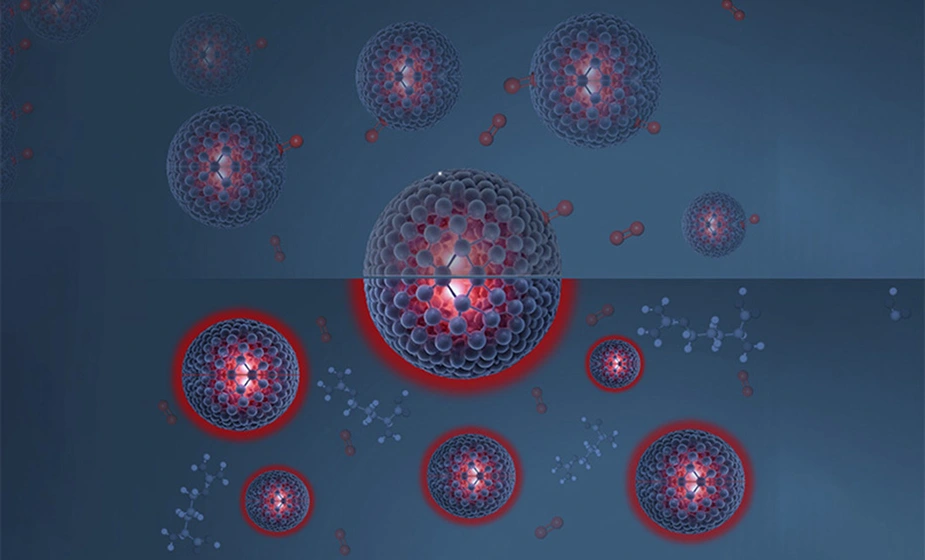Nanoparticle shield makes luminescent molecules more durable for high-tech applications
Silica particles shield luminescent molecules from oxygen
They are tiny but glow intensively: special light-emitting molecules used in environmental analysis, medical diagnostics, and energy research. However, their luminescence intensity can be significantly reduced by oxygen in the air. Researchers at the Bundesanstalt für Materialforschung und -prüfung (BAM) have now developed a “nano-protective shield”: embedded in nanoscale silica particles, molecules with initially oxygen-sensitive emission remain significantly more stable and luminescent – a major advancement for future-oriented technologies.
Many modern technologies use light-emitting molecules, so called luminophores. They are utilized, for example, as contrast agents for medical imaging or in solar cells. Particularly promising are compounds such as chromium(III) complexes, also known as “molecular rubies”, developed by Prof. Katja Heinze from Johannes Gutenberg University in Mainz. “These molecules can emit light for more than a millisecond. This is ideal for many high-tech applications,” explains Ute Resch-Genger from BAM, who leads the DFG project NILE-CHROME 2.0 with Katja Heinze. “But at the same time, they are very sensitive to oxygen and can lose their luminescence.”
An interdisciplinary research team has now found a simple solution to protect the sensitive molecules from oxygen. Building on the silica expertise of BAM researcher Isabella Tavernaro, the scientists embedded the luminophores in tiny silica nanoparticles. Nanoparticles made of silicon dioxide (SiO₂), the main component of quartz glass, are chemically stable and biologically compatible. By encapsulating the molecules, these specially prepared silica nanoparticles form a shield against external influences, preserving their luminescence.
Innovative synthesis method
To protect the luminophores from oxygen, the team tested various synthesis routes for silica nanoparticles. The most effective solution was a little-known synthesis method using the natural amino acid L-arginine as a catalyst. In a two-step synthesis, the luminophores are directly integrated into the growing nanoparticles, completely shielding them from oxygen. Measurements have confirmed that this encapsulation preserves the molecules' luminescence in the long term.
This innovative method could advance the development of long-lasting luminescent materials based on oxygen-sensitive substances. It is particularly exciting for so-called upconversion materials. These intensively studied material systems can convert light energy in a targeted manner, for example, converting green excitation light into blue emission. This could lead to new, powerful photonic materials in the future, such as optical sensors for contactless precise measurements or new luminescent codes.
Involved partners and funding
The project was conducted jointly with scientists from Johannes Gutenberg University Mainz and the University of Vienna. The results were recently published in the journal Nano Research.
The research was funded by the German Research Foundation (DFG – Vh RE 1203/23-2, project number 326469115) and the Novo Nordisk Foundation Denmark (Interdisciplinary Synergy Programme 2021; project MiGraGen).
Further information:
Press release BAM, 24 April 2025
